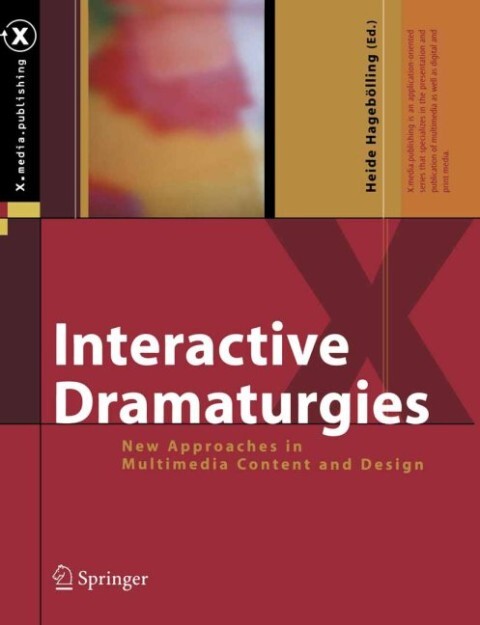Interactive media require new forms of dramaturgy. Heide Hagebölling develops a new understanding of dramaturgy, "Interactive Dramaturgy", which goes beyond interactive storytelling. Contributions by international multimedia authors, designers, and artists outline concepts and strategies for multimedia productions. These outstanding example projects cover various genres: culture, museum, TV, and education. Interactive media are complex and have multiple dimensions. A linear dramaturgy, therefore, no longer holds. The global connection via Internet fosters further dimensions of exchange and competition. Interactive dramaturgies define rules, transition points, and dimensions of multi-user environments. Multimedia, real and virtual elements must be carefully integrated within applications or installations. Interactive dramaturgies help design and create environments and content that lead to immersion, active exploration, and knowledge acquisition, and that motivate users to repeated visits.
Inhaltsverzeichnis
From the contents: Multimedia Interaction Dramaturgy (Men/Machine Interaction; The History of Interaction Dramaturgy).- Cultural Learning (E-Motional Learning: The Role of Drama in Education; System Concepts for Cultural Learning; Example Projects: "Telling the Life and Philosophy of Buddha", and "Archaeology of the Unconscious: Sigmund Freud CD-ROM").- Museum & Media (Setting the Stage for Interaction; Interactive Narrative and Integrated Applications in a Museum).- MediaTexture and HybridSpaces (MetaField: Interactive Data Spaces; The Crossing: Transformation in Benares).- Interactive Games.- Hands @ Film & Television (Interactive Movies: Practical Experimentation with Parallel Video Streams; TattleTypes and TattleToons).- www.Literature&Stories (Interactive Stories; Click and Roll: Paul is Dead).- Media.Content.Design.com (Frames: At the Edge of the Beyond; The Circular Page: Designing a Theater of Interaction; Write a Story as a Building).












